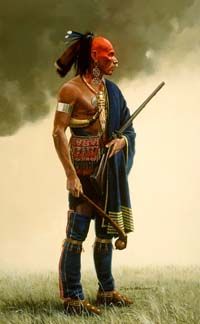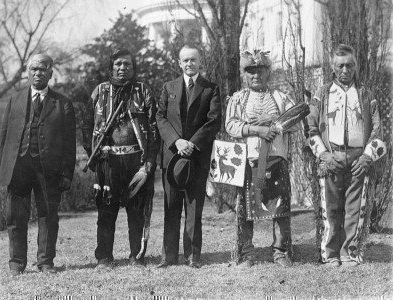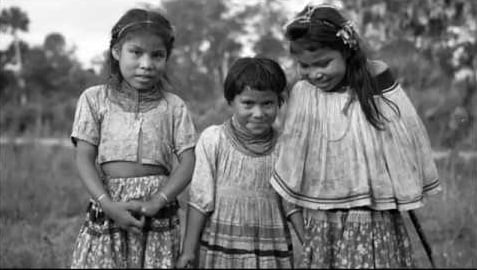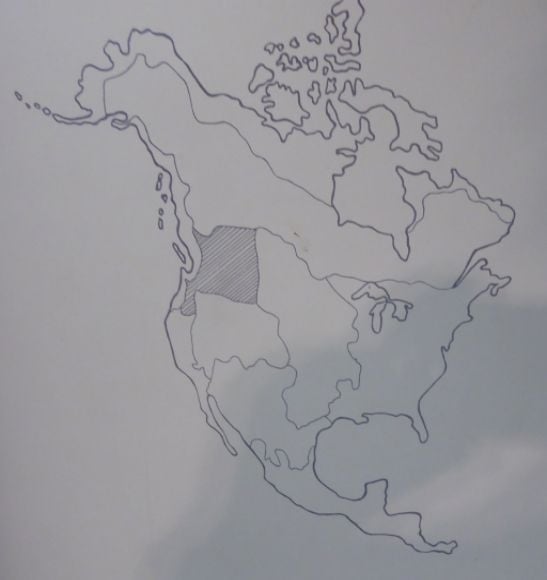American Indian Citizenship
Since the very beginning of the United States, the idea of American citizenship for Indians has been a controversial subject. American government is based on Native American models. American democracy was inspired in part by the Indian democracies which the European colonists saw around them. After independence from England, the newly formed United States wrote a constitution which was inspired by the Iroquois Confederacy.
Citizenship for Indians is a unique situation. It is important to remember that Indians were not immigrants to this country and therefore the ways in which they have become citizens are not the same as immigrants from Europe, Africa, Asia, and other parts of the world. Long before there was a United States, Indians were citizens of sovereign Indian nations. Today, many continue to be citizens of these sovereign nations.
One of the first ideas about Indian citizenship was that Indian nations might be admitted to the United States as states with their own representatives and senators. This first emerges in 1778 in the first treaty between the United States and an Indian tribe – the Lenni Lenape. This treaty contains a clause indicating that the tribe might form their own state and have representatives in Congress. Chief White Eyes insisted upon this clause.
Later, promises of an Indian state were made to the tribes who were removed from their homelands and sent to Indian territory (part of which later became the state of Oklahoma). However, by the time that Oklahoma became a state these promises were long forgotten. Not only did Oklahoma statehood mean that all tribal governments within the state were to be dissolved, it also meant that the Indian name Sequoya which had been proposed for the new state was rejected by the federal government. Sequoya was the Cherokee who invented Cherokee writing. This name had been suggested for the new state by both Indians and non-Indians and was favored by most of the residents of the territory.
In 1856 the Attorney General of the United States noted that while Indians were subjects of the United States they could not become naturalized citizens because this was an option available only to foreigners. In other words, Indians were in a kind of limbo with regard to citizenship: they were not citizens nor could they become citizens.

While Indians as a group were denied citizenship, there were instances in which individual Indians were granted citizenship under special circumstances. In North Carolina, Cherokee warrior Junaluska was given citizenship in 1847 and a track of land. The state recognized him as a “distinguished son” who had fought with Andrew Jackson.
Following the Civil War, the United States altered its Constitution with the Fourteenth Amendment. Adopted in 1868, this Amendment states that “all persons born or naturalized in the United States, and subject to the jurisdiction thereof, are citizens of the United States and of the state wherein they reside.” Reading these words today it would seem that this Amendment would grant citizenship to Indians. However, the Amendment was intended to give citizenship to male African-American former slaves and not to Indians. Subsequent court cases and legal rulings made it clear that the Fourteenth Amendment was not intended to grant citizenship to Indians. For example, in 1871 in McKay v. Campbell, the federal district court in Oregon ruled that the Fourteenth Amendment had not made Indians citizens. Another ruling in 1873 in the Washington Territorial Court found that Indians could not become citizens by simply severing tribal connections. According to the court, citizenship for Indians required a naturalization act by Congress.
For Americans during the nineteenth century, the idea of United States citizenship for Indians was very closely associated with private land ownership (and the myth of the family farm). The idea of communal land ownership – the kind of land ownership which Indian nations had been exercising for centuries – was deemed repugnant and a barrier to civilization.
The United States took a giant step toward “civilizing” Indians and paving the way for them to become U.S. citizens with the passage of the General Allotment Act (more commonly called the Dawes Act) in 1887. In order to assimilate Indians into American society, the act broke up the communally held Indian lands and gave each family its own allotment of land. Ignoring the fact that most people in the United States at this time could not make a living on family farms, the philosophy of the Dawes Act was to make Indians into farmers on their own land and in this way to pave the way for them to become citizens. The Dawes Act was seen as a “pulverizing machine” to break up the tribes and to turn Indians into American citizens.
Once Indians were placed on their allotments, the “surplus” Indian lands were opened for settlement by non-Indians. Under this act, Indian lands were reduced from 138 million acres to 48 million acres by 1934.
Indians were to live and farm their allotments for twenty years. During this time their land was to be held in trust for them – in other words, it could not be sold. After twenty years, the Indians could be declared “competent” and allowed to sell their land. Assuming that these “competent” Indians had severed their tribal relationships, they could then become citizens.
From the perspective of the Bureau of Indian Affairs (BIA), this meant that the BIA maintained their control over Indians during this twenty year time period. However, in 1905 the Supreme Court complicated the matter. In Matter of Heff the Supreme Court held that Indians became American citizens as soon as they accepted their land allotment. The decision infuriated Congress and the Bureau of Indian Affairs who had insisted that Indians who accepted allotments could not become citizens until the end of their trust period of twenty years.
In 1890 Congress passed the Indian Territory Naturalization Act which allowed any member of an Indian tribe in Indian Territory (now Oklahoma) to become a United States citizen by applying for such status in federal courts. The act allowed these Indians to maintain dual citizenship by maintaining tribal citizenship.
During World War I Indians were not subject to the draft because they were not citizens. However, they volunteered in large numbers to serve in the American Armed Forces. In recognition of the service of American Indians during this war, Congress passed an act in 1919 which provided citizenship for all Indians who served in the military or in naval establishments during World War I.
Congress passed the Indian Citizenship Act in 1924 which granted citizenship to all Indians. This citizenship decree was the logical political manifestation of the assimilation program and brought with it the expectation that Indians would be brought in line with other Americans in the areas of civil and criminal law. The Indian Citizenship Act supposedly gave Indians the privilege of voting, the obligation to perform compulsory military duty when called, and to pay taxes on off-reservation revenues. It is estimated that two-thirds of the Indians had acquired citizenship before the passage of the Indian Citizenship Act.
Some Indian nations, such as the Iroquois did not recognize the Citizenship Act because they did not feel that one sovereign nation had the right to impose citizenship on the citizens of another sovereign nation.
Citizenship for Indians in the United States has involved, at least in part, the conflict over states rights. The states have often argued that Indians were citizens and therefore subject to state law. At the same time, the states have often argued that Indians were “wards” of the government and therefore a class of citizens who were not allowed to vote or to give testimony in legal proceedings.
American Indians were officially given citizenship again in 1940 when Congress passed the Nationality Act. In addition to conferring citizenship on Indians, it required that Indian men register for the draft. In spite of the reconfirmation of citizenship, some states, such as New Mexico and Arizona, refused to allow Indians to vote. Passage of this act was opposed by the Indian Defense League of America. Tuscarora leader Clinton Rickard urged those who wished to volunteer for the armed services do so as alien non-residents.
Following World War II, debates in Congress over Indian matters showed that many still felt that Indians were not citizens. Similarly, many state legislators seem to be unaware that Indians are citizens.
Today, Indians are citizens of the United States. Many are also citizens of a federally recognized Indian nation, a nation recognized by the Supreme Court as a domestic, dependent nation.



